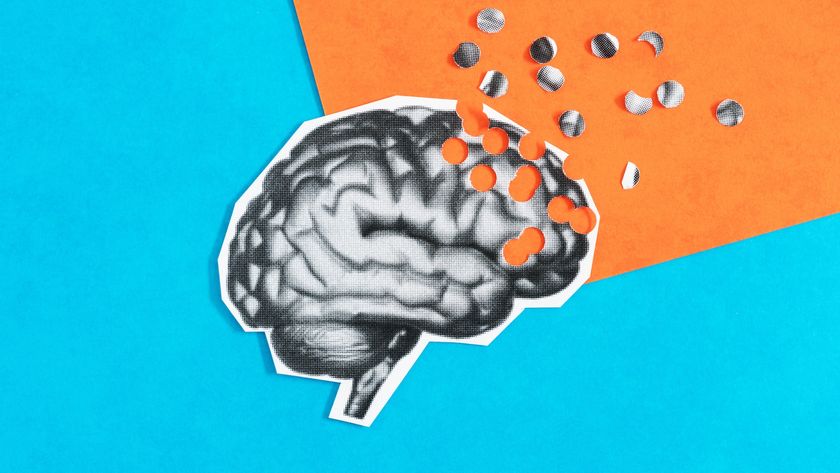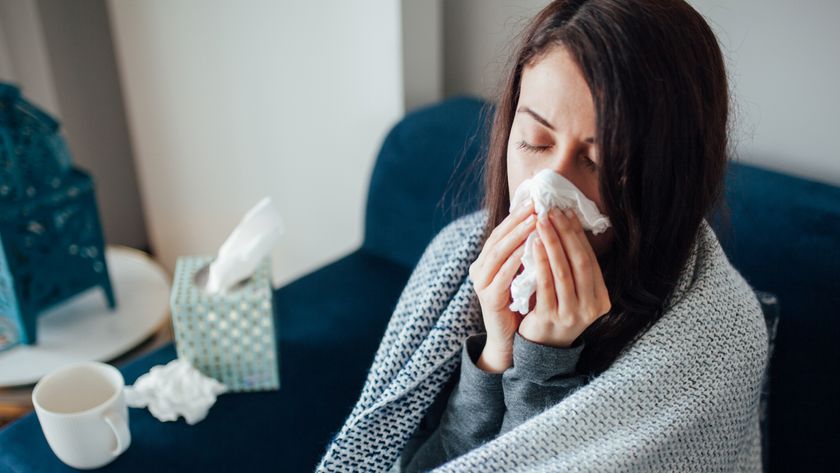Nearly Half of US Men Have Genital HPV Infections

Nearly half of American men have a genital human papillomavirus (HPV) infection, but a much smaller percentage have received the HPV vaccine, according to a new study.
The results show that about 45 percent of U.S. men under age 60 have a genital HPV infection, which translates to about 35 million men, the researchers said. What's more, 25 percent of men were infected with so-called "high-risk" types of HPV, which, compared with low-risk types of HPV, are more strongly linked with cancer. Only about 11 percent of U.S. men had received the HPV vaccine, according to the study, published today (Jan. 19) in the journal JAMA Oncology.
And surprisingly, the researchers found a high rate of HPV infection in older men. In fact, the highest rate of HPV infection seen in the study was among those ages 58 to 59 (the oldest age group in the study). This higher rate of HPV infection in older men contrasts with what's been seen in women: The HPV infection rate is lower in older in woman than in younger ones. [Men vs. Women: Our Key Physical Differences Explained]
The "consistent, high infection rate among all age groups in men was very striking, because this was not expected," said Dr. Jasmine Han, who led study and is the chief of gynecologic oncology at the Womack Army Medical Center in Fort Bragg, North Carolina.
The study is the first to estimate the percentage of U.S. men that have a genital HPV infection.
The researchers hope the findings will increase public awareness of the current low HPV vaccination rate and the high HPV prevalence rate, Han told Live Science. HPV-associated cancers in men are increasing, she noted. There is a very effective "vaccine that could eradicate HPV-associated cancers in both women and men, but the prevalence remains high despite the availability" of these vaccines, she said.
The current vaccination age cutoff for men, 26, should be re-evaluated in light of the new findings showing a widespread high HPV prevalence rate among all age groups, Han said.
Sign up for the Live Science daily newsletter now
Get the world’s most fascinating discoveries delivered straight to your inbox.
HPV in men
Human papillomaviruses are a group of more than 150 related viruses that infect different parts of the body. HPVs that infect the genital area can spread as sexually transmitted infections. Most infections go away on their own, but some can linger and lead to health problems, including genital warts and cancer, according to the Centers for Disease Control and Prevention.
In the past, efforts to prevent HPV infection focused mainly on women, because HPV infections can lead to cervical cancer. But in 2009, health officials approved the HPV vaccine for males, and the vaccine is now recommended for both females and males ages 11 to 26 years old.
However, few studies have looked at the prevalence of genital HPV infection in men, or how many men receive the HPV vaccine.
In the new study, researchers analyzed information from 1,868 men ages 18 to 59, who took part in a national health survey from 2013 to 2014. In addition to answering questions, the men in the study underwent a physical exam. As part of that exam, the participants swabbed their penises. The samples were then tested for DNA from nearly 40 different types of HPV.
Men in the youngest age group, ages 18 to 22, had the lowest rate of infection, with about 29 percent of men in this group having an HPV infection. But the rate of HPV infection was higher, 46.5 percent, among men ages 23 to 27, and it reached 51 percent among men ages 28 to 32.
Among men in their late 30s and early 40s, the rate of HPV infection was slightly lower, but among men ages 58 and 59, the rate was nearly 60 percent, the study found.
In contrast, a 2011 study of HPV infections in women found that the rate of HPV infection was nearly 54 percent among 20- to 24-year-olds, but only 39 percent among 50- to 59-year-olds.
Vaccinate older men?
The finding of a lower rate of HPV infection in younger men compared with older ones may, in part, reflect the current recommendation to give the HPV vaccine to younger men. Among men ages 18 to 22 in the study, 22 percent had received the HPV vaccine.
In addition, some studies suggest that men's immune systems don't respond as strongly to fight off HPV infections as women's systems do. What's more, people's immune systems decline with age, which may be why the older men in the study had accumulated a higher rate of infections than the younger group, Han speculated.
Finally, some studies have found that men tend to have a similar number of new and recent sexual partners, regardless of their age, which provides continued opportunity for HPV infection throughout their lives, the researchers said.
Because the study was conducted at a single point in time, it cannot determine why older men had higher rates of HPV infection, the researchers noted. The study also cannot determine the effect of the HPV vaccine on the risk of infection among different age groups. [5 Dangerous Vaccination Myths]
Still, the researchers estimated that more than 25 million American men are eligible for the HPV vaccine, but haven't received it. HPV vaccination "may have a profound effect on the prevention of HPV-related cancers" in both men and women, because men serve as reservoirs for HPV infections for women and because HPV can also cause genital and oral cancers in men, the researchers said.
Additional reporting by Karen Rowan.
Original article on Live Science.

Rachael is a Live Science contributor, and was a former channel editor and senior writer for Live Science between 2010 and 2022. She has a master's degree in journalism from New York University's Science, Health and Environmental Reporting Program. She also holds a B.S. in molecular biology and an M.S. in biology from the University of California, San Diego. Her work has appeared in Scienceline, The Washington Post and Scientific American.

Man nearly guaranteed to get early Alzheimer's is still disease-free in his 70s — how?

The US is having its most active flu season in 15 years

